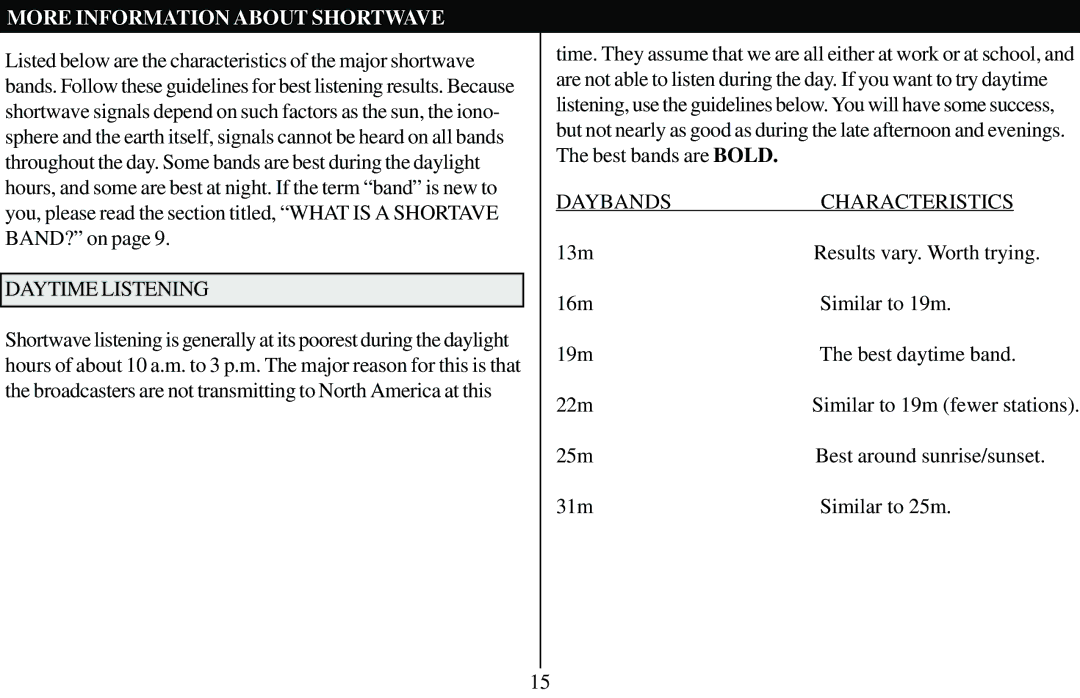MORE INFORMATION ABOUT SHORTWAVE |
|
|
|
|
| |
Listed below are the characteristics of the major shortwave |
|
| time. They assume that we are all either at work or at school, and | |||
|
| are not able to listen during the day. If you want to try daytime | ||||
bands. Follow these guidelines for best listening results. Because |
|
| ||||
|
| listening, use the guidelines below. You will have some success, | ||||
shortwave signals depend on such factors as the sun, the iono- |
|
| ||||
|
| but not nearly as good as during the late afternoon and evenings. | ||||
sphere and the earth itself, signals cannot be heard on all bands |
|
| ||||
|
| The best bands are BOLD. |
|
| ||
throughout the day. Some bands are best during the daylight |
|
|
|
| ||
|
|
|
|
| ||
hours, and some are best at night. If the term “band” is new to |
|
| DAYBANDS | CHARACTERISTICS | ||
you, please read the section titled, “WHAT IS A SHORTAVE |
|
| ||||
|
|
|
|
| ||
BAND?” on page 9. |
|
| 13m | Results vary. Worth trying. | ||
|
|
| ||||
|
|
|
|
|
| |
DAYTIME LISTENING |
|
| 16m | Similar to 19m. | ||
|
|
| ||||
Shortwave listening is generally at its poorest during the daylight | ||||||
|
| 19m | The best daytime band. | |||
hours of about 10 a.m. to 3 p.m. The major reason for this is that |
|
| ||||
|
|
|
|
| ||
the broadcasters are not transmitting to North America at this |
|
| 22m | Similar to 19m (fewer stations). | ||
|
|
| ||||
|
|
| 25m | Best around sunrise/sunset. | ||
|
|
| 31m | Similar to 25m. | ||
|
|
|
|
|
| |
15
